Tree Planting
Five rowan trees, funded through the Climate Change Reserve, have been gifted to the Witham Slea Blue Green Corridor Project and planted as part of the Queen’s Green Canopy “Plant a tree for the Jubilee”. An event to plant these trees was held at Dysart Park on the 11th March, to coincide with the National Association of Civic Officers (NACO) Tree Planting Day. The 11th March 2022 was chosen by NACO because it is the 70th day of the year in which The Queen marks the seventieth anniversary of her accessions. The selected day had the full support of The Queen’s Green Canopy project organisers. The following people were in attendance, along with members of the public and park users, to commemorate the Platinum Jubilee and plant the gifted trees:
- Councillor Breda Griffin – SKDC Chair
- Gareth Davies – MP for Grantham and Stamford
- Councillor Kelham Cooke – SKDC Leader
- Councillor Rosemary Trollope-Bellew – SKDC Cabinet Member Culture and Visitor Economy and Blue Green Corridor Chair
- Councillor Mark Whittington - SKDC Cabinet Member for Waste & Climate Change
- Councillor Dean Ward - Grantham Mayor
- Councillor Graham Jeal – Ward Member
- Nigel Harris Community Payback Probation Regional Co-ordinator
- Sharon Haythorn – Corporate Operations Officer
- Tracey Mooney - Regeneration Project Manager
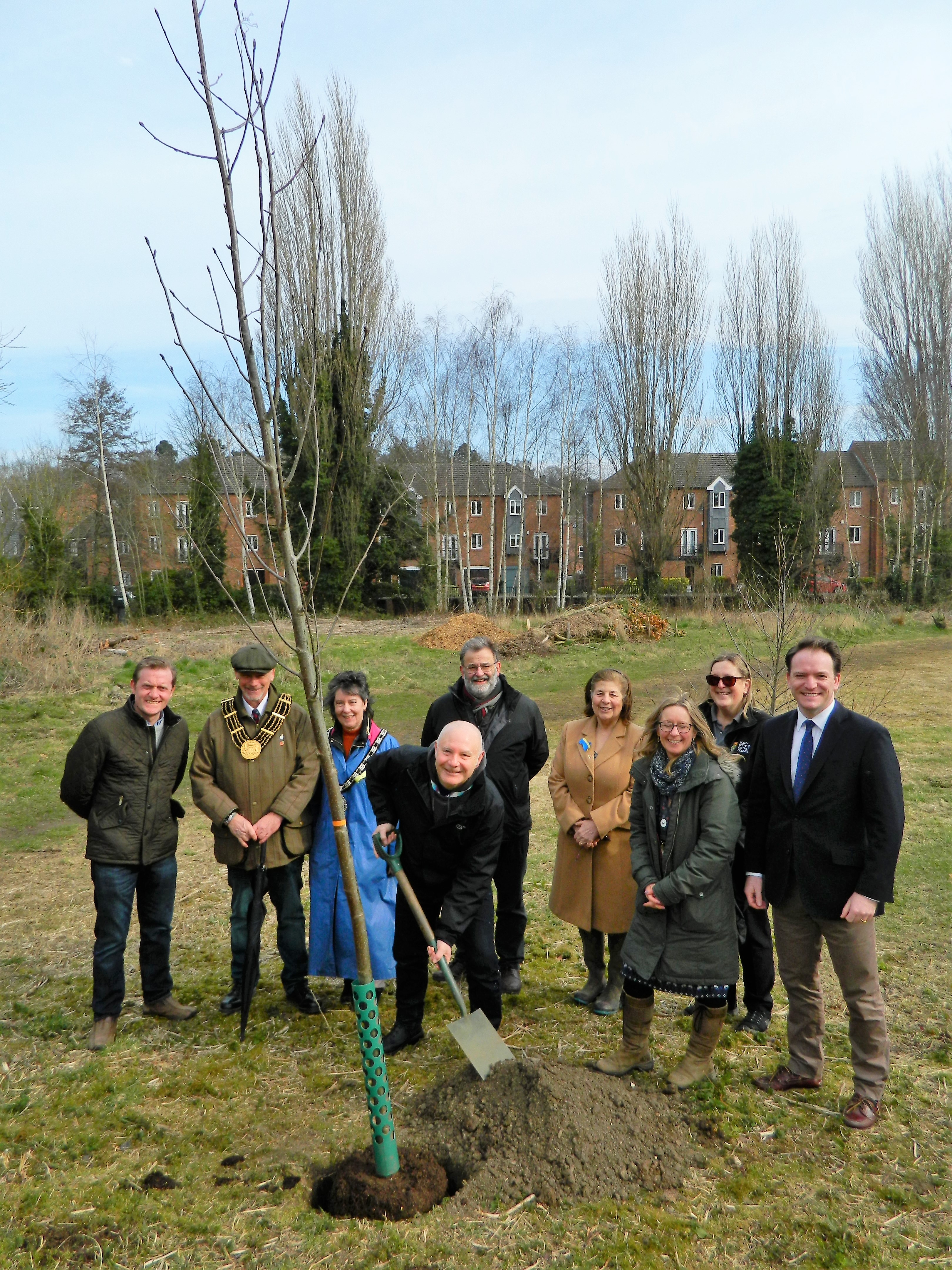
Community Payback Probation Regional Co-ordinator Nigel Harris lends a hand at the planting supported by SKDC Chairman Cllr Breda Griffin, Gareth Davies MP. Cabinet Member for Culture and Visitor Economy Cllr Rosemary Trollope-Bellew, SKDC Cabinet Member for Waste & Climate Change Cllr Mark Whittington, Grantham Mayor Cllr Dean Ward, local ward member Cllr Graham Jeal, Regeneration Project Manager Tracey Mooney and Corporate Operations Officer Sharon Haythorn.
SKDC Chairman Cllr Breda Griffin gave a few words at the event:
Welcome to Dysart Park, a beautiful open space in the heart of our community, which we very much hope will soon earn the prestigious Green Flag Award along with Wyndham Park and Queen Elizabeth Park.
What brings us here today is a very special tree-planting ceremony - South Kesteven District Council’s contribution to the Queen’s Green Canopy marking Her Majesty’s Platinum Jubilee.
These five native rowans are just the latest trees we are planting across the district, funded from our climate change reserve fund in recognition of all the good things that trees deliver towards carbon reduction and the simple sense of wellbeing they can bring.
They are also another important step in our Blue Green Corridor partnership project, improving the River Witham and its riverbanks and green spaces through Dysart Park Wyndham Park, Queen Elizabeth Park and on to Belton Park.
Funded largely by the European Regional Development Fund, it’s a fabulous partnership between us, North Kesteven District Council, the Environment Agency and the National Trust.
Thank you to Tracey Mooney, the project lead, for coordinating today’s planting.
I also want to make special mention of our partnership with Community Payback, not only for their environmental improvement work here in Dysart Park but also in Grantham Cemetery, Wyndham Park and Queen Elizabeth Park.
Our thanks go to all those who have helped to clear an area on the site of the old swimming pool and with the planting of a wildflower meadow with species identified by Lincolnshire Wildlife Trust that will help bees and insects survive and thrive. The project has also seen the creation of new wildlife-friendly habitats and provision of bird boxes for trees here in the park.
What a legacy this is for generations to come.
I would now like to invite Gareth Davies and Cllr Rosemary Trollope-Bellew to pick up a spade and get planting!
Following the event, Cllr Rosemary Trollope-Bellow, SKDC Cabinet member for Culture and Visitor Economy made the following statement of endorsement, in her capacity as portfolio holder for the Blue Green Corridor Project:
"Tree planting is a valuable part of our wider ambitions regarding the climate challenges we face, and we are delighted to play our part in helping to creating the Queen's Green Canopy.”
To read the article on this event please visit Queen's Canopy trees planted in Grantham park (southkesteven.gov.uk).
Community Payback Gift Bird Boxes

Representatives from contractors Lions environmental, South Kesteven District Council Project Team and the Community Payback Team.
Excitingly, a few weeks prior to the Queen’s Canopy trees being gifted, a wildflower meadow was created at Dysart Park, Grantham.
This was completed as part of the Blue Green Project, expertly undertaken by Lions Environmental Contractors with the aid of the Community Payback Scheme.
In conjunction with the wildflower meadow installation, 6 bird boxes, have been constructed and gifted by the Community Payback scheme, to provide essential nesting areas for birds in Dysart Park.
Paul Sturton, the Community Payback Operations Manager for East/West Lincolnshire said “Our partnership with South Kesteven district council is going from strength to strength. The projects we are working on are enabling People on Probation to undertake meaningful work in order to make reparation to the communities in which they have offended. In addition to the loss of liberty, the projects our People on Probation are working on are also providing rehabilitative outcomes and the opportunity to develop knowledge and skills relating to conservation and the wider sustainability paradigm.”
Cllr Rosemary Trollope-Bellow, SKDC Cabinet member for Culture and Visitor Economy, also acknowledged and highlighted the role of partnerships, such as this, have in delivering environmental improvements at local level:
"It's really encouraging to see a partnership between the council, our specialist contractors Lions Environmental, and Community Payback, which has previously helped with work in Grantham Cemetery, Wyndham Park and Queen Elizabeth Park. "Our link with Community Payback has worked really well, making a positive contribution to the community. They are leaving a real legacy."
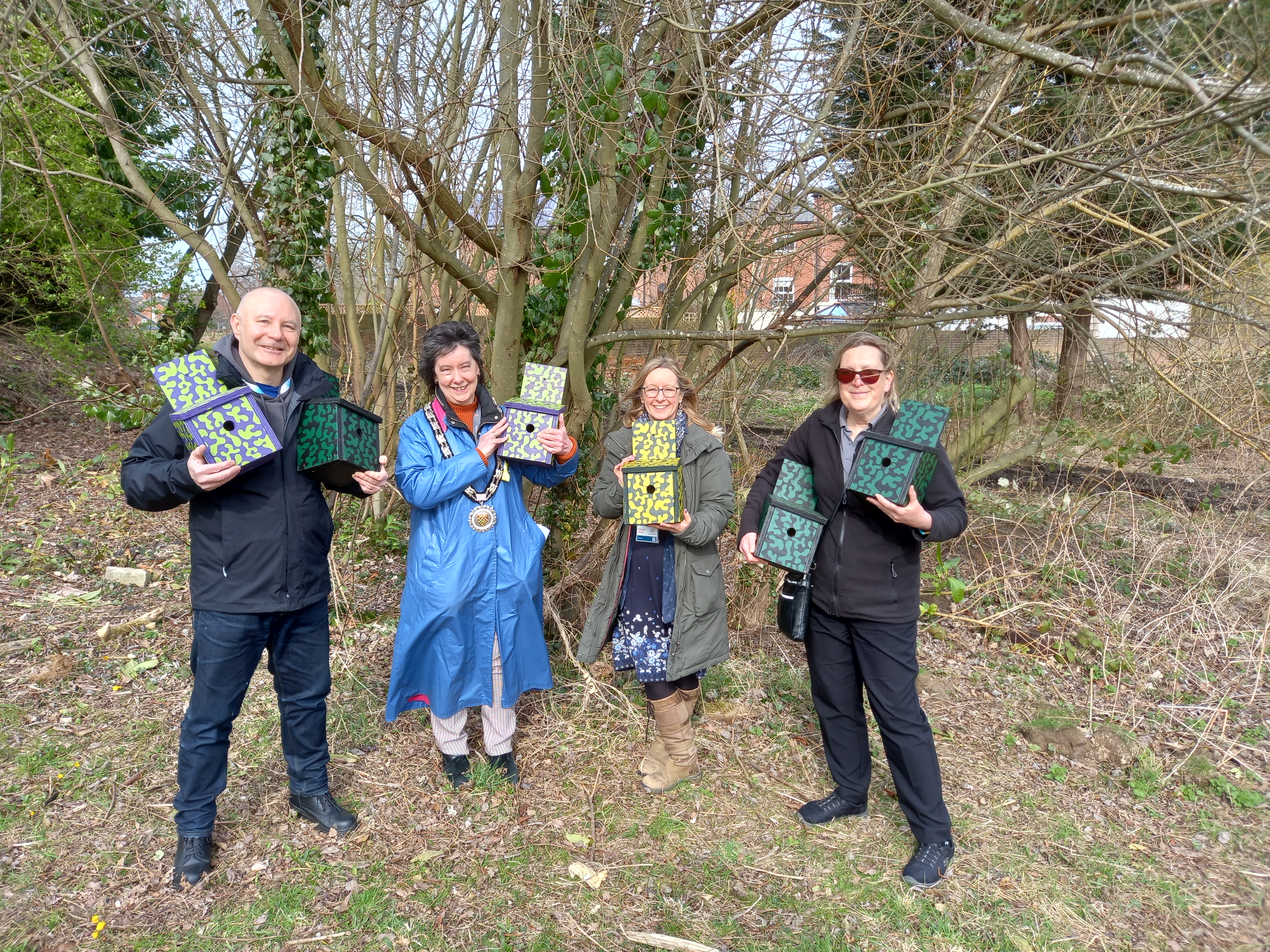
Gifted bird boxes from the Community Payback Probation Scheme. From left to right: Community Payback Probation Regional Co-ordinator Nigel Harris, SKDC Chairman Cllr Breda Griffin, Regeneration Project Manager Tracey Mooney and Corporate Operations Officer Sharon Haythorn.
Wonderful Wildflower Meadows
Wildflower Meadows are extremely important habitats. Did you know that a massive 97% of our wildflower habitats have been lost since the 1930s!
This has largely been due to them being unprotected, mismanaged and undervalued, not thought of when agricultural practices have changed and increased the use of herbicides/fertilisers as well as land overtaken for urban growth.
However, more recently the benefits of wildflower meadows are starting to be recognised for their great value to animal and insect species as well as to humans. Nearly 1400 pollinating species rely on wildflower plants to survive, creating severe impacts for animals, such as hedgehogs and birds, when they are in decline. These species of smaller mammals and birds benefit from both an abundant supply of food and the vital nesting and refuge habitats wildflower meadows provide.
Not only do insects provide an essential food source to other animals approximately 35% of food crops around the world rely on pollinating insects to thrive.

Flower-rich grasslands are able to support a greater abundance and diversity of pollinating species than other habitats, such as the Peacock butterfly pictured above.
Dysart Park Wildflower Meadow - Before and After
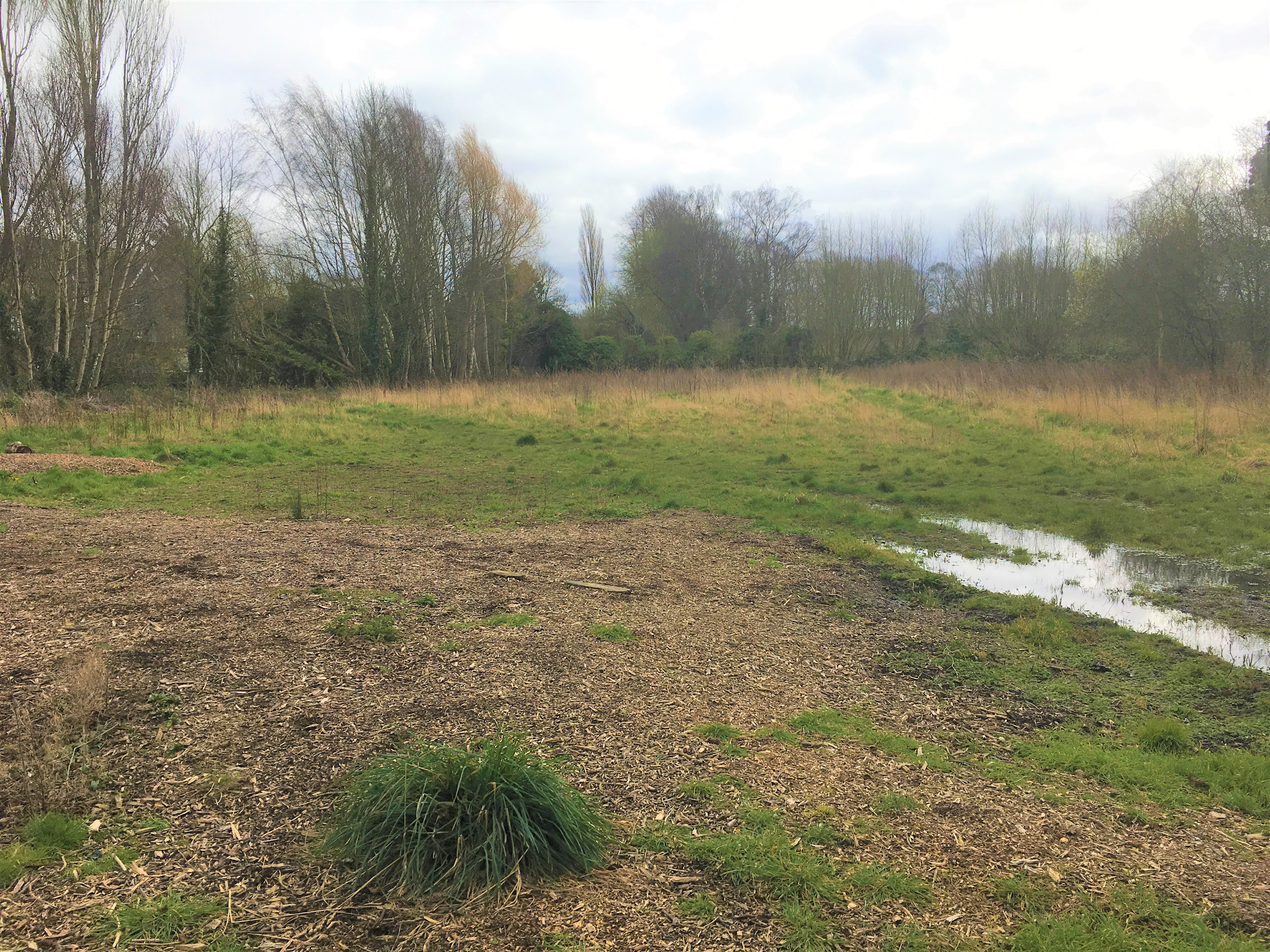
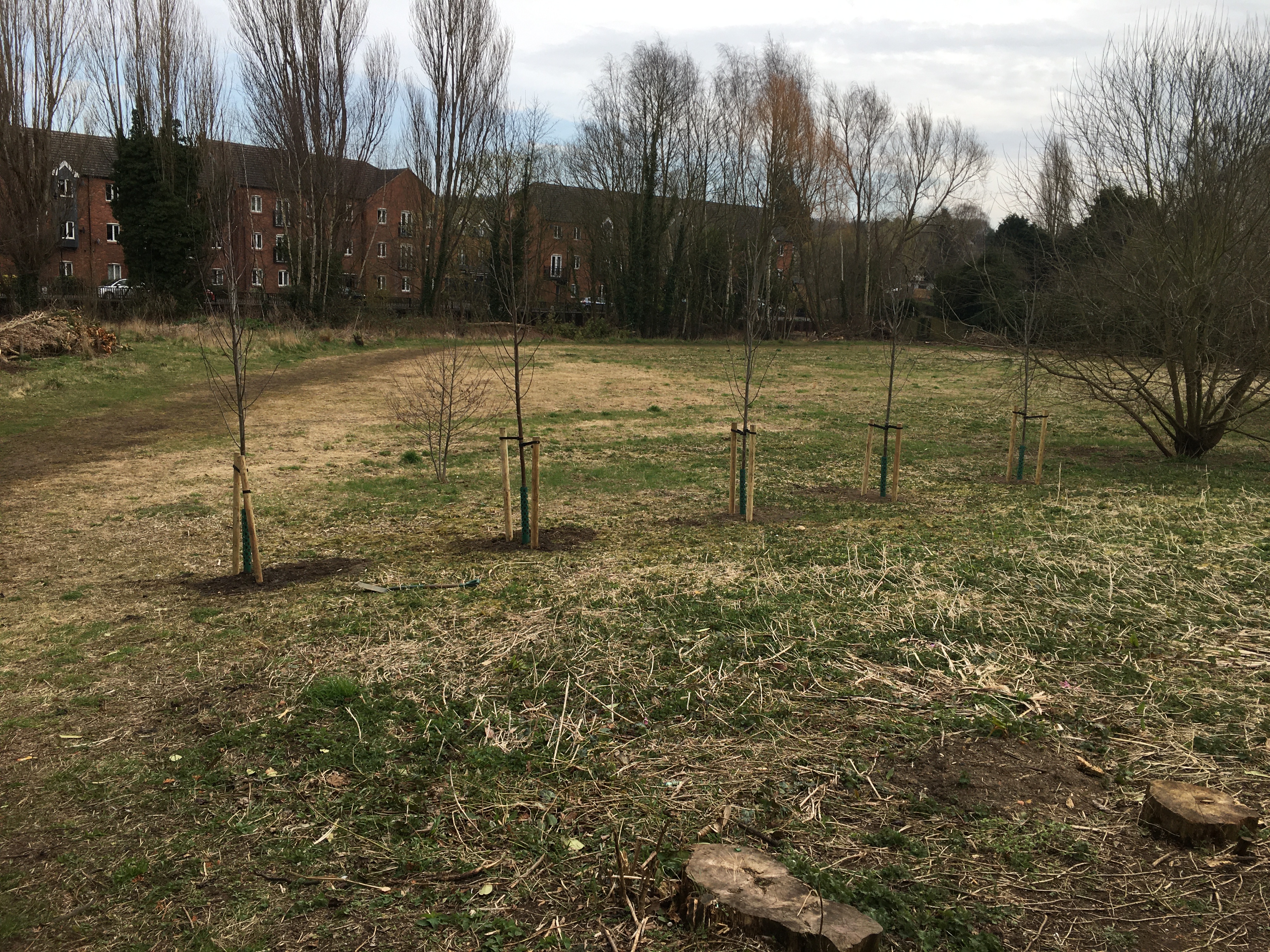
Before Works
After Wildflower meadow creation and tree planting
Wildflower Meadows take time to establish and it can be a few years until we see what we would call an ‘established wildflower meadow’. However, when the wildflowers begin to bloom at Dysart Park we will be able to see all the wonderful native species sown there! Some such species are Cornflowers, Oxeye Daisy, Foxgloves and Jacobs Ladder. Cornflowers are a staple of UK wildflower meadows, standing out with their bright blue colourings. Historically seen filling whole fields, Cornflowers can grow up to a metre tall displaying its brilliant flower from June to August. Another recognisable wildflower standing out from the grasses are the rosy-purple foxgloves. With flowers up to 6cm long foxgloves are excellent for pollinator species, in particular long-tongued and common carder bees are able to collect pollen and nectar from the tubular shaped flowers. Their clever design causes the pollinator to land on the lower lip of the flower, allowing the pollinator to drop pollen onto other foxgloves, therefore allowing the plant to reproduce.
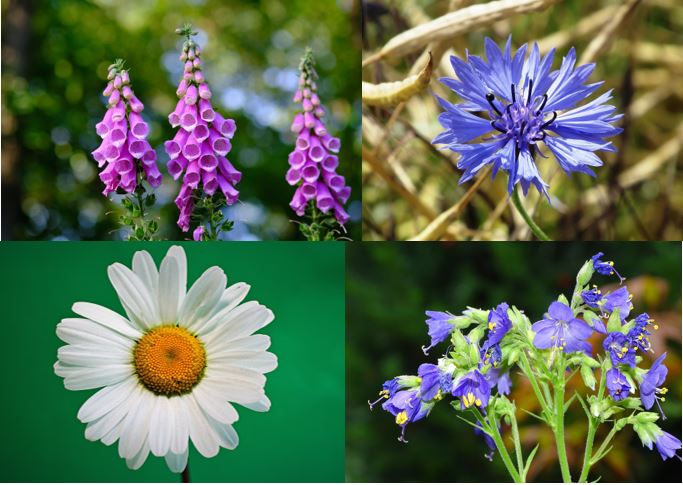
From Top Left to Bottom Right: Foxglove, Cornflower, Oxeye Daisy and Jacobs Ladder.
In recent years it has become widely acknowledged that our green spaces help improve mental health and wellbeing. The pandemic has put into perspective just how important these accessible local spaces are, with research undertaken in lockdown by the Mental Health Foundation showing “going for walks outside was one of our top coping strategies and 45% of us reported being in green spaces had been vital for our mental health”(https://www.plantlife.org.uk/uk/about-us/news/a-walk-to-wellbeing).
In particular, exposure to landscapes such as meadows has shown to improve our connection to nature and wellbeing not only for general health but how we feel about life, with Natural England’s 2020 report showing that people who visit nature at least once a week are twice as likely to say their lives are worthwhile than others. Further highlighting just how important these green spaces are and how important it is to preserve and create these spaces going forward.






